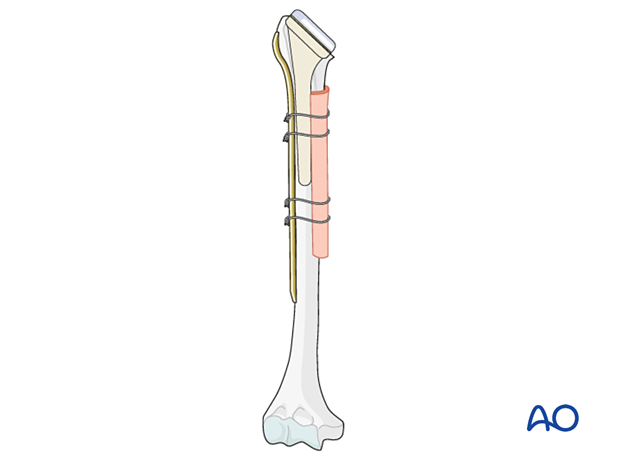Bony reconstruction with augmentation
1. Reconstruction with allograft
Strategies for dealing with bone loss in the proximal humerus depend on the quality and integrity of the bone remaining after explantation of the primary prosthesis.
There are two options that can be used:
- Augmentation of partially intact bone using strut allografts.
- Replacement of absent bone with a humeral allograft-prosthesis composite (APC technique). More information on this technique is provided here.

Augmentation of the partially intact bone using strut allografts
If there is insufficient bone stock to achieve primary prosthetic implantation stability, a structural (strut) allograft can be added to the plate and cerclage osteosynthesis.

A strut allograft is fashioned to bridge the humeral defect. The strut allograft is applied to the relevant surface of the humerus.

The allograft should be of sufficient length to obtain adequate fixation on each side of the humeral defect. The allograft is secured with at least two cerclage wires around each fracture fragment. The distance between the cerclage wires should be at least 2 cm.

2. Bone replacement by metal prostheses
Bony reconstruction facilitates repair or reconstruction of the soft-tissue attachments, which is generally preferable. In cases where allograft is not available, prosthetic (metallic) reconstruction of the proximal humerus is an option.














